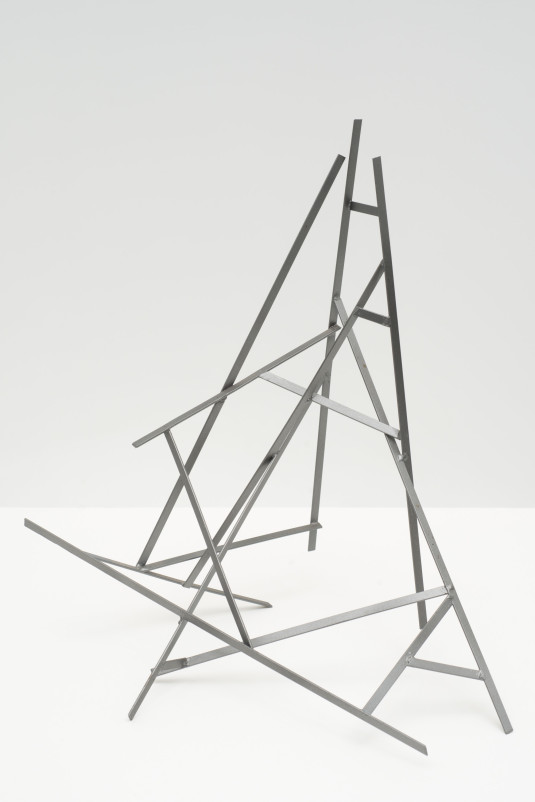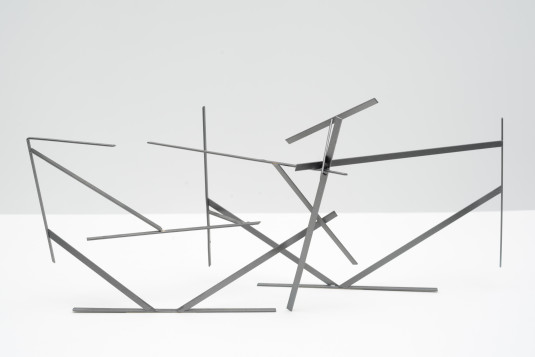John Panting
Born in Palmerston North in 1940, John Panting died in a motorcycle accident near his East London studio at only 34 years old. Although his life was brief, surveying his practice reveals an artist who restlessly unwound ideas and influences in pursuit of a unique sculptural idiom.
After studying fine art at the University of Canterbury, Panting moved to England in August 1963 to further his artistic endeavours. Following a meeting with Henry Moore, he was introduced to Bernard Meadows, Professor of Sculpture at the Royal College of Art, and entered the RCA in 1964. There, he and his contemporaries engaged with the emerging use of fibreglass as an alternative to bronze and plaster.
In the late 1960s, Panting transitioned from the closed, biomorphic forms of his fibreglass work toward open, hollowed-out compositions made of steel which incorporate simple geometric shapes — squares and triangles — and evoke architectural residue. The two Panting maquettes in the Chartwell Collection, produced between 1972 and 1974, are emblematic of his later work: skeletal, ascetic compositions made of welded steel.
Panting’s inventive, restless approach to abstract sculpture is often overlooked in mid-century sculpture histories, due to his early death, expatriate status, and tendency to destroy or recycle earlier works in the evolution of his practice. His large collection of photographs blurs the line between documentation, models and experiments. Nonetheless, his influence on New Zealand sculpture is evident in the works of Neil Dawson, Greer Twiss and Peter Robinson, the latter of whom exhibited work in conversation with Panting at the Adam Art Gallery in 2013.


